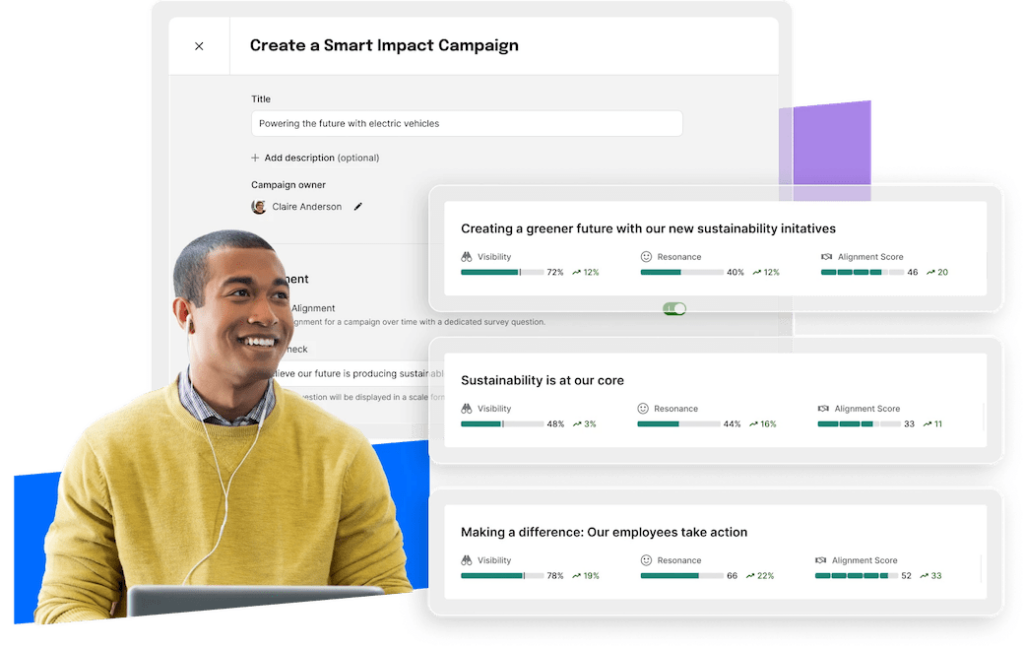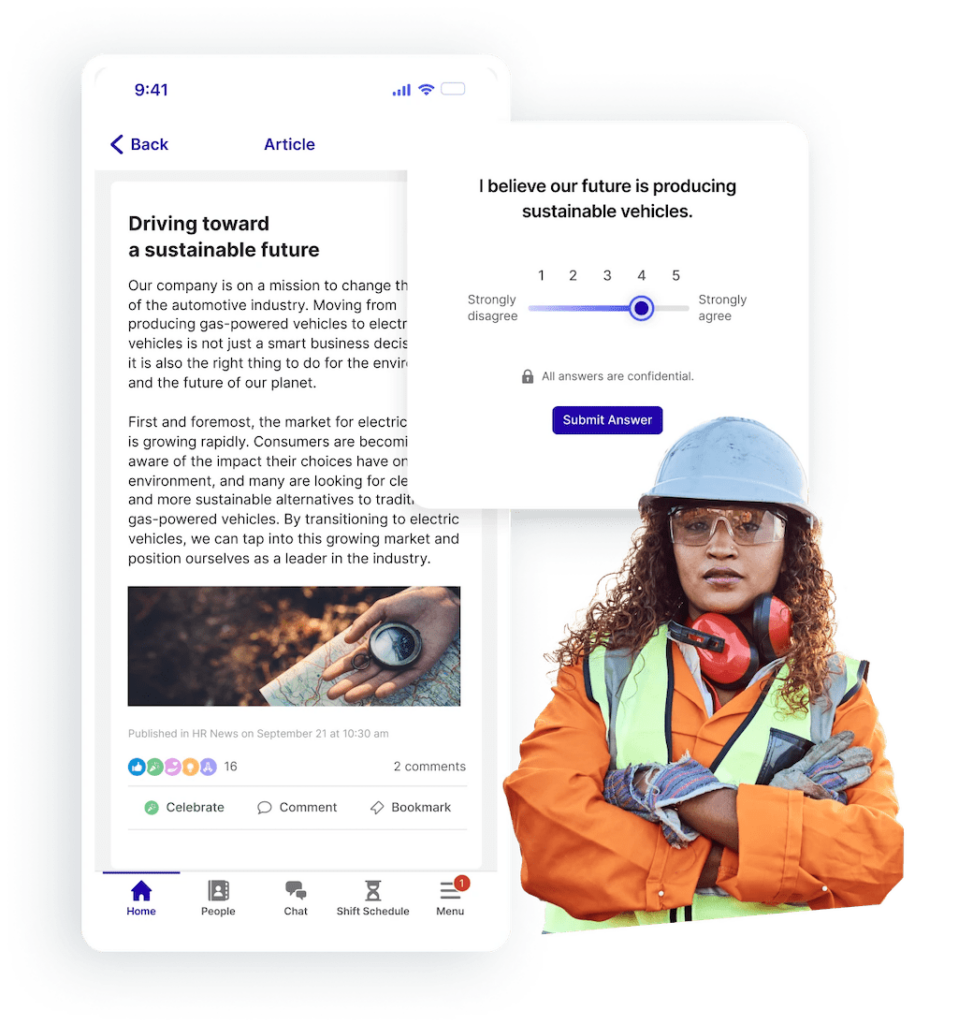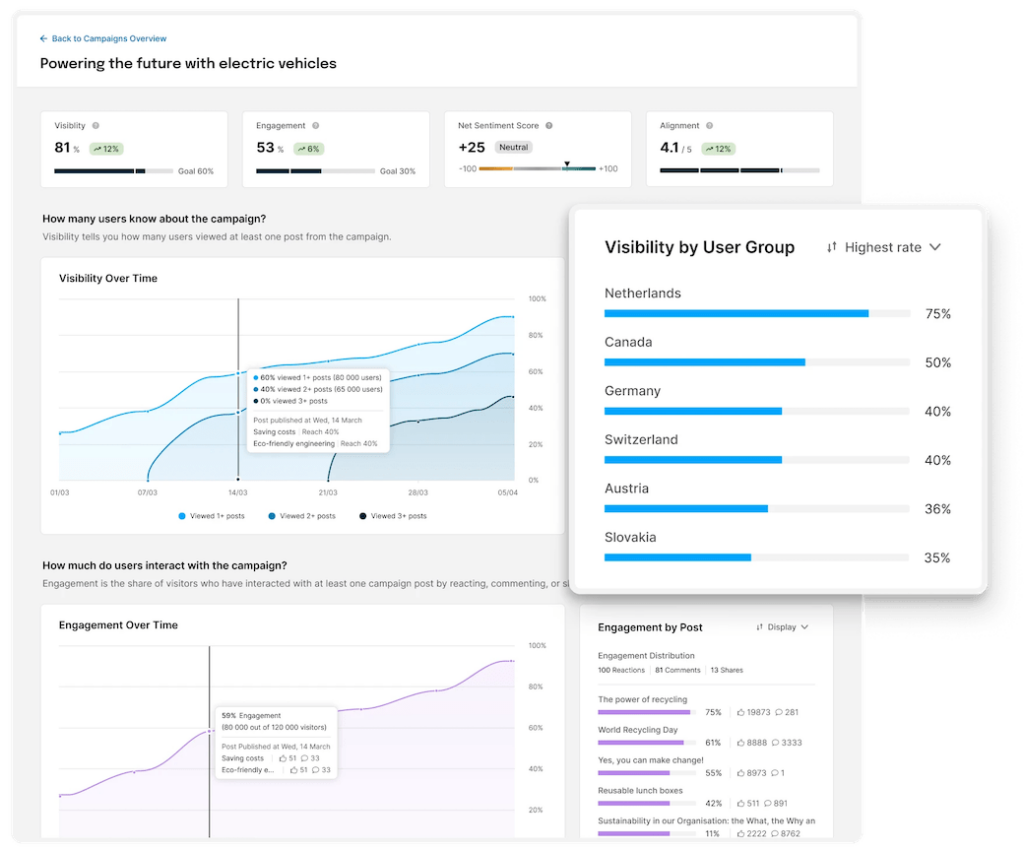Measuring Narrative Impact: Moving from Outputs to Outcomes
Learn how narratives make communication outcomes more impactful and more measurable.

Overcoming the measurement challenge
As anyone working in the field will tell you, measuring the effectiveness of communication has long been a challenge for organizations. Traditional metrics often only measure outputs — counting sent press releases, clicked links, or post likes. But what about the deeper impact? How do we know whether a communication effort has truly changed opinions, shifted attitudes, or, as we like to say, won hearts and minds?
Measurable impact is more straightforward in areas like marketing, where clear calls to action can be tracked (e.g., event attendance or webinar signups). Communication goals, on the other hand, are often less tangible. The objective might be to reshape perceptions, build trust, or inspire a cultural shift — outcomes that are harder to quantify but are crucial for long-term success.
This blog post — based in part on The Narrative Age: How Leaders Can Inspire Change in a Polarized World — argues that a strategic narrative offers a powerful approach to overcoming this measurement challenge, making the outcomes of communication not only more impactful but also more measurable. We’ll explore how understanding the difference between stories and narratives helps. And we’ll examine tools that effectively measure both tangible and intangible results.
 Narratives allow for the measurement of previously intangible outcomes such as reshaping perceptions, building trust, or inspiring a cultural shift.
Narratives allow for the measurement of previously intangible outcomes such as reshaping perceptions, building trust, or inspiring a cultural shift.
1. Understanding the challenge of measuring communication
Communication professionals have struggled for years with the challenge of demonstrating the impact of their work. Marketing can often point to clear metrics like conversion rates or lead generation. But communication aims to achieve more nuanced goals, such as influencing opinions or managing crises.
We often judge the success of communication by its ability to create a shift in mindset — an outcome that is inherently harder to measure. While useful, traditional output metrics fail to capture these deeper impacts, creating a gap between what communicators say and what they achieve.
2. Narratives as a solution to the measurement challenge
Why are narratives a solution to the measurement challenge? It’s because stories form the foundation of how we communicate and understand the world. Communicators share stories, and audiences receive them. Over time, a series of stories forms a pattern, and this pattern becomes a narrative — a broader, more impactful framework that shapes how audiences think and feel.
For example, consider how someone might hear multiple stories about traveling to Paris. These stories collectively create a perception, or narrative, that Paris is an exciting and romantic destination worth visiting. This demonstrates how our brains process stories to form lasting beliefs.
The key insight for communication measurement is that instead of focusing on whether a specific story was remembered, we can assess the narrative that emerges over time. By asking questions like, “How likely are you to visit Paris?” we capture the overall impact of multiple stories, not just the details of one.
Traditional metrics often measure whether a story was sent and received, but narrative measurement looks deeper. It evaluates how the accumulation of stories over time has influenced and changed an audience’s perceptions, attitudes, and behaviors. This shift — from measuring outputs to measuring outcomes — is essential for communicators who seek to understand the true impact of their efforts.
3. How to measure narratives effectively
For effectively measuring narrative engagement, communication professionals need to adopt a different approach to measurement.
Here are the key steps to follow:
Understand the difference between story and narrative
Story and narrative are often used interchangeably, but they are distinct concepts. A story is a singular event, while a narrative is a continuous thread that weaves through multiple stories and interactions. Understanding this distinction is crucial because it shifts the focus from short-term outputs to long-term outcomes. When measuring narrative engagement, track how the overarching theme shifts perceptions or attitudes over time, rather than just counting story shares or views.
Utilize tools like Staffbase Smart Impact that feature in-the-moment surveys
Surveys are a valuable tool for understanding how a narrative is resonating with your audience, offering direct insight into their perceptions and reactions. However, traditional surveys come with a challenge: over time, respondents tend to suffer from survey fatigue. You probably know the feeling yourself. People are asked to participate in so many surveys — especially in workplace settings — that response rates often dwindle, leading to less reliable data.
This is where in-the-moment surveys like those provided by Staffbase Smart Impact come into play. Instead of bombarding employees with long or disconnected surveys, Smart Impact integrates quick, highly relevant questions at the moment of content consumption.
Research has shown that people are significantly more likely to respond when a survey is directly related to the content they’ve just seen, treating it almost as a form of feedback or reaction. In fact, we’ve observed much higher engagement through these in-the-moment surveys compared to traditional engagement metrics such as likes or comments.
By providing immediate, context-driven feedback, tools like Smart Impact overcome the challenges of survey fatigue, delivering more relevant and actionable insights that help in measuring narrative engagement in real time.
Here, in three steps, is how it works:
• Campaigns
First, create strategic campaigns aligned with company goals. Track engagement and visibility across your content.

• Alignment Surveys
Next, add surveys to your campaigns to gauge employee sentiment and how well your narrative resonates with the audience.

• Insights
Finally, gain actionable insights from survey results and audience reactions to improve future communications and campaigns.

This final step is where the real power of Smart Impact stands: its ability to accumulate data points over time. As more content is consumed and more feedback is gathered, you can track how the perception of your overarching narrative evolves. This provides a clearer picture of how well your communication is resonating, allowing you to adjust your strategy as needed.
By capturing real-time, in-the-moment feedback and tracking changes in perception over time, Smart Impact offers a dynamic solution to measure the true impact of your narrative, overcoming the limitations of traditional survey methods.
4. Challenges and solutions
Measuring narrative outcomes has its own set of challenges. It can be difficult to isolate the impact of a narrative from other factors that influence perceptions. Additionally, outcome metrics can be more complex and time-consuming to track than simple output metrics.
To overcome these challenges, it’s essential to integrate narrative measurement into the broader business strategy. To do this, align your narrative goals with overall business objectives, and use a combination of research methods to gather comprehensive data.
Tools like Smart Impact can significantly ease this process by providing real-time insights that help you understand and respond to employee sentiment and other intangibles quickly and effectively.
Shifting from outputs to outcomes: Measuring the lasting impact of narratives
In today’s information-saturated world, focusing on narrative outcomes rather than traditional communication outputs is essential for any organization seeking to truly influence perceptions and drive change. Narratives help align mission and value statements to empower communicators to overcome the traditional challenges of measurement by enabling them to track not just what they said, but how it changed their audience’s perception.
Effectively measuring narrative engagement starts by understanding the difference between stories and narratives, utilizing real-time survey tools like Smart Impact to capture and track immediate feedback over time, and combining tangible and intangible measurements to build a robust theory of change.
By adopting this approach, you will ensure that your coordinated communication efforts not only reach your audience but, more importantly, resonate with them in meaningful and lasting ways.









